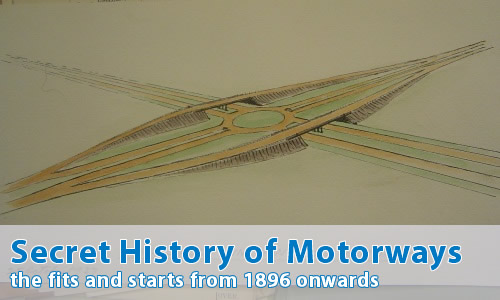The Tide Turns: 1939 - 1948
Not terrifically surprisingly to anyone, new road building pretty much came to a complete standstill during World War II. However, during this period of darkness, thoughts naturally turned to a time after the war was over and many plans were being formulated for that time, not least in the area of motorways. Certainly the war showed the potential of motorways for the transport of people and goods (as well as weapons), as the Autobahn system in Germany aided in effective deployment during the war.
In 1942, the Institution of Civil Engineers recommended that the 1938 County Surveyors' Society 1,000-mile plan should be implemented when the war was over, whilst in 1943 the Ministry of War Transport announced that the Government was now of a mind that motorways were indeed a good thing, confirming the immediate pre-war ideas, following a 1942 internal proposal for a potential motorway network.
In the same year, Sir Patrick Abercrombie and J.H. Forshaw wrote the County of London Plan (with the Greater London Plan following in 1944). This included the idea of motorways through the urban area of London, though in a slightly more sane way than Lord Montagu's idea of twenty years before. Other large urban areas got in on the act too: Manchester and the West Midlands also saw development plans that included motorway concepts.
Meanwhile, out in the regions, motorways had not been forgotten either, though from it's perhaps a surprising corner of England. The Regional Motorway was proposed by Cumberland County Council, which was to be a 46 mile route from Carlisle to Egremont, with a possible extension into southern Scotland. This proposal is especially interesting as it included ideas for a motorway - railway junction; realistically a station that was solely accesible from the motorway.
More pressure was brought to bear in 1944 with the British Road Federation again supporting the 1938 County Surveyors' Society proposals.
So, that's the War years. I take it that peacetime saw quite a lot of forward movement then?
Not exactly, no. Money was very tight, and there were more important reconstruction work for everyone to worry about.
There were some relevant developments, though. The 1946 Trunk Roads Act extended the remit of the 1936 Act, and moved more roads under the direct control of the Ministry - and meant for the first time that Trunk Roads could go through County Boroughs. Other than that, there was mostly just surveying work undertaken as capital investment went elsewhere.

